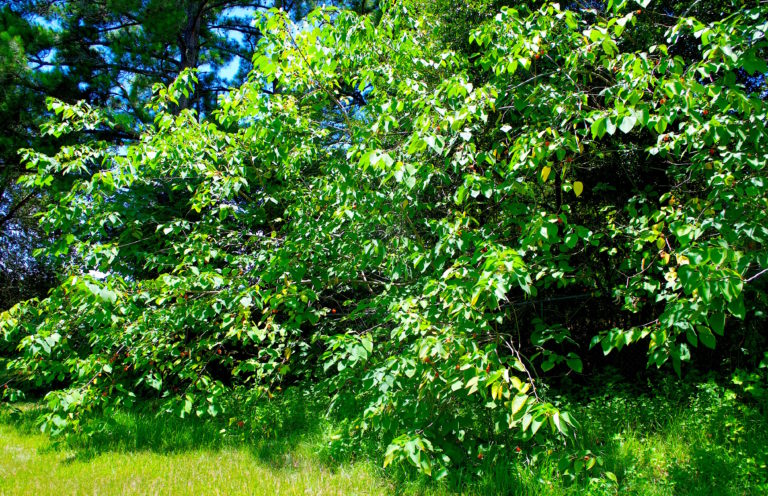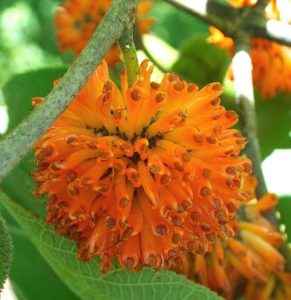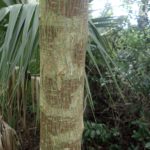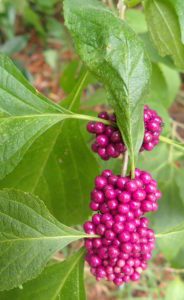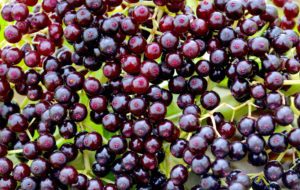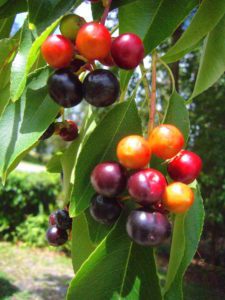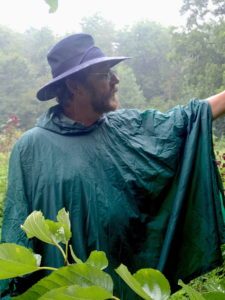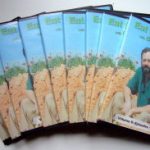It’s all about sex, if you are a Paper Mulberry. The tree has been used for thousands of years in Asia to make paper and cloth. It also has edible fruit. The dark side is the tree can be very invasive. The solution, some thought, was to export only male trees. The problem, however, is the male trees spread vegetatively so there was no containing them. And while this is true I also knew there had to be some female trees around because I would sometimes find just one Paper Mulberry tree, all by itself in the woods. And indeed there are plenty of girl trees around but they do need chilly weather to fruit.
In a foraging class in Jacksonville this past weekend the Paper Mulberries were coming into fruit, which is actually a little late in the season. Young leaves can be cooked and eaten as well but they have a texture issue and are chewy. The tree often crowds out other trees and can become the only tree in a valley or on the side of a hill or along a field. Even if the tree doesn’t fruit it is easy to identify by the large leaves and striped bark. It also has one other important use which you can read about here.
Locally the American Beautyberries are blossoming and soon they will have magenta berries. Beautyberries are near the bottom of the list on flavor, insipid more than offensive. But they make a great jelly. The shrub has also been known for its ability to repel insects. This past week I received a letter from Dianne in praise of the Beautyberry and insect control
“We have been plagued by mosquitoes and those biting deer and horse flies while riding our horses in the woods. Last week we had to dismount and brush about 30 of them from underneath our horses bellies just in order to keep them from going crazy and bolting off. Even though we don’t like using the traditional store-bought horse fly sprays, we did try several over the last couple of years and none of them really work all that well. After reading [your article] we experimented this weekend with the beautyberry. We cut small branches we tucked into their tack. We also rubbed some fresh leaves all over ourselves and the horses. We could not believe the results! We had a two-hour ride each day this past weekend and we’re not troubled by any biting insects. There was an occasional fly that attempted to make a problem but was easily shooed away. We are so lucky to have tons of this bush growing all over our pastures. It is also along every trail that we ride on so it is easily acquired along the ride as well. Thank you!”
Everywhere I drive or ride now I see deadly Water Hemlock in bloom, Cicuta mexicana. It is difficult to go past any small body of fresh water and not see it. In Port Charlotte last week, in the southwest part of the state, it was in numerous road side ditches. I even cut one off taking it to class for show and tell. Once you know what it looks like the deadly Water Hemlock is easy to spot. In the greater carrot family the blossom is an umbrella made up of smaller umbrellas. It also has vertical ridges along the stem which can be splotched with purple (or the entire plant can by dusky purple.) Also blossoming heavily now are Elderberries which also like to grow in damp places. The deadly Water Hemlock and the Elderberry are quite different. You can read about them here. Speaking of Elderberries, I saw a large stand of them this past week as well as a lot of unripe Pawpaws. If you live locally, particularly just north of Orlando, and want to know where they are email me. I also know where there are some Ivy Gourds in Longwood if anyone is interested.
What was odd foraging this week was a distinct absence of Chickasaw Plums. Usually this is near peak season. A few weeks ago in Gainesville they weren’t ripe yet but in Jacksonville they seemed to be completely past season. Also fruiting oddly this year is Black Cherry. In some places where I expect to find it past season it still has unripe fruit. Also falling into the seasonal warp are Maypops. We found an excess of them in Gainesville and a dearth of them in Jacksonville. I would also like to complain to the weather management that although we’ve had a lot of rain of late the mushrooms just are not responding locally.
Foraging Classes:
Sunday June 26th, John Chestnut County Park: 2200 East Lake Road, Palm Harbor, FL 34685. Meet at the trail head of the Peggy Park Nature Walk, pavilion 1 parking lot. 9 a.m.
Sunday, July 3rd, Blanchard Park, 10501 Jay Blanchard Trail, Orlando, FL 32817, 9 a.m. Meet next to the tennis courts.
Sunday, July 10th, Red Bug Slough Preserve, 5200 Beneva Road, Sarasota, FL, 34233. 9 a.m.
Sunday, July 17th, Wickham Park: 2500 Parkway Drive, Melbourne, FL 32935-2335, 9 a.m. Meet at the dog park inside the park.
Sunday, July 24th, Bayshore Live Oak Park, 2200 East Lake Road, Port Charlotte, FL. 9 a.m. We meet at the parking lot across the street from Ganyard Road
To learn more about the foraging classes go here.
Want to identify a plant? Perhaps you’re looking for a foraging reference? You might have a UFO, an Unidentified Flowering Object you want identified. On the Green Deane Forum we — including Green Deane and others from around the world — chat about foraging all year. And it’s not just about warm-weather plants or just North American flora. Many nations share common weeds so there’s a lot to talk about, such as the one to the left. There’s also more than weeds. The reference section has information for foraging around the world. There are also articles on food preservation, and forgotten skills from making bows to fermenting food. Recent topics include: Hopefully Groundnut. Bane of my Efforts. Tiny Hypericum. Snake BootsUnidentified Cane Plant, Small Green, Scrub Jays!, Type of Magnolia, Water-Loving Weed, Piper auritum, the tropical sassafras. New Mystery. Aesculus pavia. Bull Thistle? What A Waste. Like a Viola. Viola Bicolor. Urban Lawn Weed. Drymaria Cordata. Wild Blueberry blossoms? Foraging Group Ft. Lauderdale. Red Berries. Huge Thorns on Leaves. How Could An Infant Be Fed By Foraging? You can join the forum by clicking on the button on the upper right hand side of this page.
All of Green Deane’s videos are available for free on You Tube. They do have ads on them so every time you watch a Green Deane video I get a quarter of one cent. Four views, one cent. Not exactly a large money-maker but it helps pays for the newsletter. If you want to see the videos without ads and some in lightly better quality you can order the DVD set. It is nine DVDs with 15 videos on each. Many people want their own copy of the videos or they have a slow service and its easier to order then to watch them on-line. They make a good gift for that forager you know. Individual videos can also be ordered. You can order them by clicking on the button on the top right of this page or you can go here.
This is Newsletter 2012. We are trying to recover from Hostgator seven missing newsletter in April and June.
If you would like to donate to Eat The Weeds please click here.

